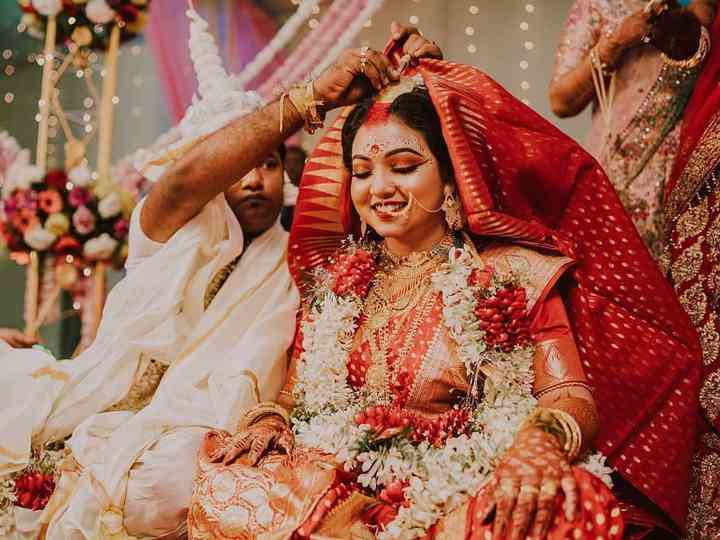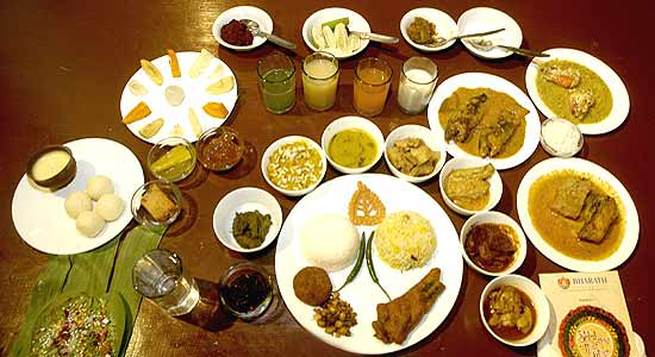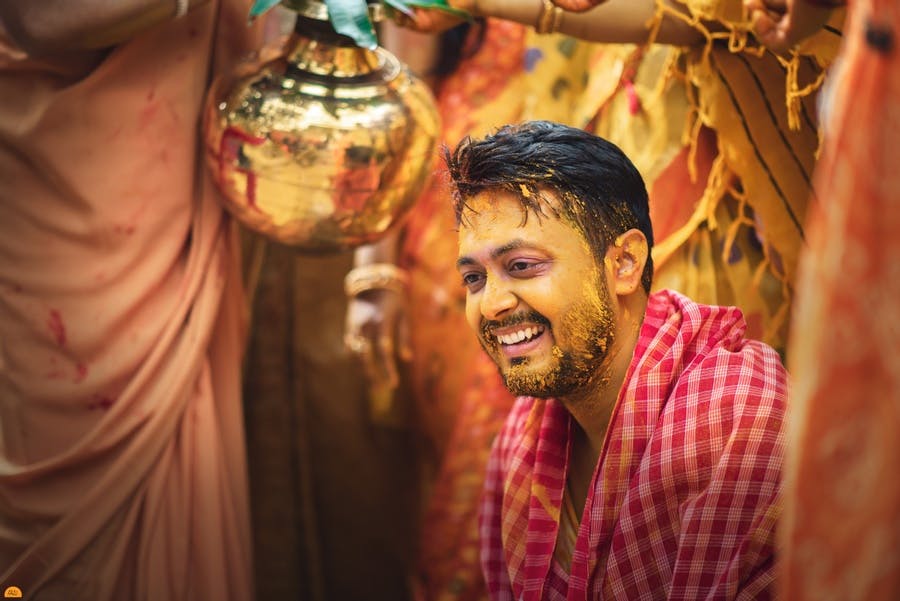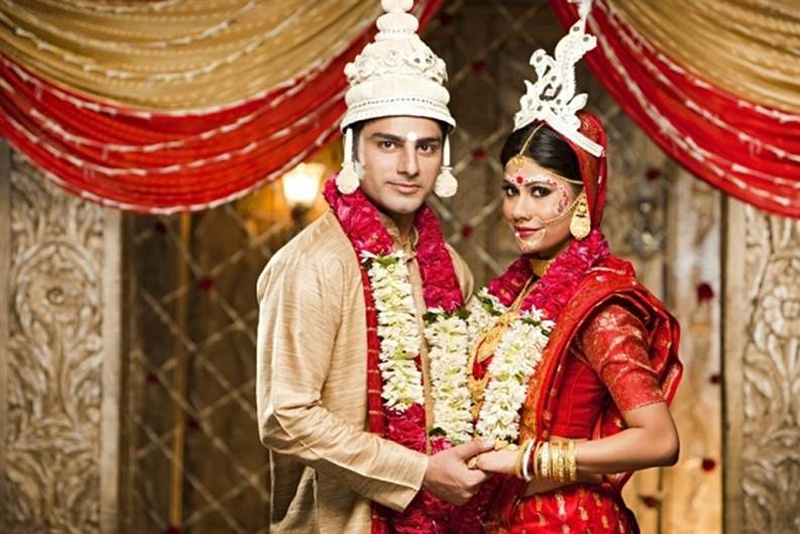There is something magical about every Indian wedding. The bouts of emotions and endless festivities make a big fat Indian wedding an exemplary experience. Be it a Punjabi wedding with great pomp and show, or a royal wedding in Rajputana style, a simple yet culturally rich South Indian wedding or a vibrant wedding in Kashmiri style, Indian weddings are an intrinsic part of our alluring culture. But what if we get to experience all of these in just one marriage ceremony?
A typical Bengali wedding brings you a whole gamut of frolics, food, fun and celebrations. Known as “Biye” in Bengali, Bong weddings can definitely be a once-in-a-lifetime opportunity for anyone. Want to know more about an authentic Bengali wedding ceremony? Let us walk you through the various nuances of “Biye.”

Pre-wedding shenanigans:
In a time when all other couples get busy with pre-wedding photo and video shoots, Bengali couples get to enjoy various traditions and rituals which mark the commencement of their ultimate union. Let’s discuss these lesser-known yet amazing Bengali pre-wedding rituals!
Pati-Potro: The elders of both the families gather around and make themselves comfortable on Pati or fancy decorative mats. The auspicious date for the wedding is decided on this day, and the groom’s family offers gifts such as fish, sweets, betel leaves and nuts as a token of love.
Aashirbad: On this occasion, both the families bless the couples with gold jewellery, clothes, and loads of sweets. This is quite similar to the Roka ceremony, which is quite common in North India.
Aai Buro Bhaat: The groom and the bride enjoy a scrumptious meal in their respective households. This tradition is meant for offering the last meal of their bachelorhood. Generally, the delectable dishes are prepared by the mothers of the couple.

Gaye holud: This is the Bengali version of Haldi. The only difference is that the ceremony is much more vibrant and larger than life than we normally get to see in North Indian weddings. The soon to be bride applies the turmeric paste, which has been brought by the groom’s family. The bathing ceremony is done using the holy water from the Ganga river. The groom’s family also brings along Totto for the Gaye Holud ceremony.


Wedding festivities
Bengali weddings are in no way just about the ladies wearing white sarees with the red border. Although the mainstream media often portrays Biye in this light only, they do not make the slightest effort to research deeper and go beyond the red and white sarees. Well, we are here to decode the Bengali wedding customs and traditions as well.
Chhele boron and Bostro Daan: Boron means welcoming the groom with a plate full of water and sweets by the mother of the bride. Other ladies play Conch shell and also do the Ulu Dhwani. After the groom enters the venue, the father of the bride gifts him a gold or diamond ring and new Bostro or groom’s attire.

Shaat Paak and Shubho Drishti: The brothers and cousins of the bride carry her on a Piri or a wooden platform. They revolve her around the groom while the bride keeps her face covered with betel leaves. After seven rounds of Shaat Paak, the bride uncovers her face and looks at the groom. This is known as Shubbho Drishti. After this, the bride and the groom exchange garlands in the Joi Mala ceremony.


Konnadan: This is similar to Kanyadan ceremony in North Indian weddings. As the bride and the groom sit facing each other, the bride’s father offers his daughter’s hand to the groom. The father officially gives away his daughter to the groom. In return, the groom promises to take care of the bride for the rest of his life.

Bengali wedding ceremonies are indeed a detailed affair with numerous intricate rituals. All these customs have their own significance and beauty. Bong weddings are more like a balanced meal. You get a comprehensive taste that makes you satiated, happy and elated, at the same time. If you ever get the chance to attend a Biye, do not miss out on this golden opportunity ever.

